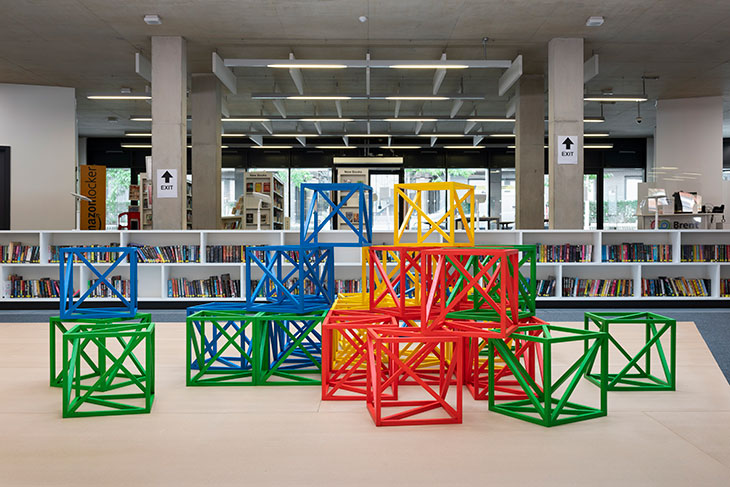The first Brent Biennial is part of Brent’s year as the London Borough of Culture, in which, to date, much of the culture has been postponed due to Covid-19. The staging of Zadie Smith’s first play, The Wife of Willesden, written as part of the programme, will now take place (hopefully) in 2021. The mile-long street party planned for Kilburn High Road will not take place at all.
While this culture was not happening, Brent suffered some of the worst ravages of the pandemic. By the end of May, it had a worse mortality rate from the disease than any other local authority area.
That the biennial, commissioned in late 2019 and scheduled initially for April, is happening at all is quite an achievement. That its host venues include ten libraries might be considered equally remarkable, given recent rancorous history which saw several borough libraries close in the face of huge opposition from locals and bookish celebrities.
Lois Stonock, artistic director of Brent 2020, acknowledges the tension, but points to the participation of what are now community-run libraries such as Kensal Rise and Preston as evidence that the biennial can bring people together, and even, she says, ‘provide closure’.
Ruth Beale’s Library as Memorial at Kilburn Library, part of the Brent Biennial 2020. Photo: © Thierry Bal

The art picks up that theme of community, and perhaps also of closure, but without the triteness that often accompanies such endeavours. Most obviously arresting is Ruth Beale’s work, Library as Memorial, in which bookplates have been inserted into 491 books in Kilburn Library to commemorate the 491 people who had died of Covid-19 in the borough to September. Visitors can leave dedications and request for names to be added, the art embracing the unfolding tragedy and making something of it, however inadequate.
Other library works engage, as one might expect, with the written word. Rasheed Araeen’s Reading Room in the Library at Willesden Green is a collection of editions of the postcolonial journal Third Text, which he founded in Brent in 1987. More joyous is his Zero to Infinity, which dominates the new library space (Willesden was the flagship output of Brent Council’s Library Transformation Project, which caused such controversy back in 2011). It’s a collection of bright lattice cubes – part climbing frame, part geometric puzzle – and the children who squat in the picture book area nearby are allowed to clamber on, touch and enjoy the new arrival. An exhibition of smaller (though not small) works weaves together Arabic philosophy with spices, Aristotle, and rigid but colourful geometry.
Rasheed Araeen’s Zero to Infinity at the Library at Willesden Green, part of the Brent Biennial 2020. Photo: © Thierry Bal

David Blandy’s The World After, in Harlesden Library Plus, takes a more futuristic approach, imagining ‘Harle’s Den’, 8,000 years from now, ‘boarded by the sea, with shores in the south at Kens All Green, and to the estuary to the north at Stone Bridge’. Working with young people from the local Capital City Academy and Roundwood Youth Centre, the project is part of a larger roleplaying game that Blandy has been developing for the past two years. As a model of community engagement in art, it’s interesting, funny, and wholly realised.
Outside, Pio Abad is creating two murals in Kilburn, while Dawn Mellor’s large-scale tribute to local boy George Michael can be found in Kingsbury, next to an estate agents.
George Michael TV Outside (2020), Dawn Mellor. Photo: © Benedict Johnson

John Rogers’ Kensal Rise Has a Story is a ‘psychogeographic sound trail’ around the area, perhaps to be followed by a bottle of Abbas Zahedi’s Soul Refresher (oro), available at Paradise by Way of Kensal Green among other outlets, and thoroughly delicious.
Zahedi has made 3,000 bottles of this drinkable artwork, the majority of which will be distributed by Sufra Food Bank, which he helped establish to tackle poverty in the Borough in 2013. It’s emblematic of what the Biennial aims to achieve: engagement, care, and community cohesion.
This year’s event is billed as the ‘first Brent Biennial’, and Stonock is determined it won’t be the last. It’s much needed refreshment.
The Brent Biennial, part of Brent 2020, London Borough of Culture, runs until 13 December.



